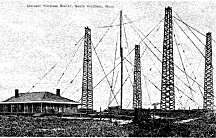
The Cast, In Order of Appearance

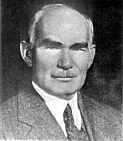

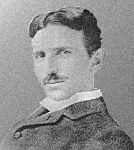
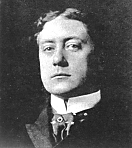
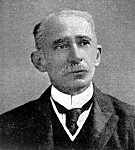
Portraits from Orrin E. Dunlap, Jr., Radio’s 100 Men of Science: Biographical Narratives of Pathfinders in Electronics and Television (New York: Harper & Brothers Publishers, 1944)
On the night of January 18, 1903, Guglielmo Marconi and his associates gathered at the Marconi Wireless Station near South Wellfleet, Massachusetts. A message of greeting in Morse code was sent from President Theodore Roosevelt to King Edward VII of England. The event made the front page of the New York Times as the first transatlantic wireless message from an American president to a European head of state. Although the station was dismantled about eighty years ago, its site, now within the Cape Cod National Seashore, is marked by a nearby National Park Service information center. Available there is a Park Service leaflet that tells visitors that the inventor Nikola Tesla “proposed the essential elements of radio communication in 1892 and 1893” prior to Marconi, and that “the U.S. Supreme Court in 1943 decided that Marconi’s basic patents were ‘anticipated’ and therefore were invalid.”1
The Supreme Court case referred to is Marconi Wireless Telegraph Corporation of America v. United States, 320 US 1 (1943), which was argued in April and decided on June 21, 1943. References to this case are not uncommon and repeat the Court’s finding that Tesla, not Marconi, invented the first radio. For example, writing in the New York Times of August 28, 1984, science reporter William Broad noted that: “It was Nikola Tesla, not Marconi, who invented radio.2 Indeed in 1943 the Justices of the Supreme Court of the United States overturned Marconi’s patent because they found it had been preceded by Tesla’s practical achievements in radio transmission.”3
Tesla’s priority over Marconi in the invention of radio is not the only conclusion often drawn from that court case. The following, for example, is from a letter sent by the inventor Lee de Forest to the radio historian George Clark in July of 1943: “You will be tickled as I am … to know that at long last, the U.S. Supreme Court has held the Fleming Valve Patent to be invalid. . . . Also that John Stone Stone, and not Marconi, was the first inventor of the so-called 4-tuned circuit.”4 In addition, radio historian Hugh G. J. Aitken observed: “in 1943, . . . in a decision by the U.S. Supreme Court, [Oliver] Lodge’s patent was the only one of the three principal Marconi Company patents to be completely upheld, the Marconi tuning patent, once the keystone of the Corporation’s patent structure, being declared invalid.”5
Clearly, interpretations of this court case have differed greatly. The lengthy opinion is technical and not light reading, so to resolve differing historical claims, we must study it for ourselves. An examination reveals that the Court did not rule on who invented radio: “Marconi’s reputation as the man who first achieved successful radio transmission rests on his original patent . . . which is not here in question.”
The 1943 Supreme Court ruling began as a lawsuit initiated by the Marconi Wireless Telegraph Company of America. Marconi invoked title 35 of the U. S. Code, section 68, and sued the U.S. government for patent infringement in the U.S. Court of Claims. This section of the U.S. Code permitted patent holders to sue if they believed that the government had bought or used equipment that infringed on their patents. The Supreme Court case resulted from appeals of both the government and Marconi Wireless of decisions from the Court of Claims.
In the Court of Claims, Marconi Wireless asserted that the government had infringed four U.S. patents, among which were No.763,772 and reissue patent No.11,913. Both had been issued to Guglielmo Marconi himself. Additional Marconi company patents alleged to be infringed were one issued to Oliver Lodge, No. 60,9154, and Ambrose Fleming’s patent No. 803,684. In its 1935 decision, the Court of Claims ruled that the radio equipment used by the government had not infringed on the Marconi patent.
The reissue patent No.11,913 was a modification of Marconi’s original radio patent granted in 1897 and covered the invention that gained the young Marconi his initial fame over the period 1896 to 1900. That equipment lacked any means for tuning either the transmitter or the receiver. Attempts to devise tuning circuits began as early as the 1890s. The goal was to create transmitters and receivers that operated at a single, well defined frequency. Notable in this effort was Marconi’s British patent No. 7,777 for the use of two tuned circuits at the transmitter and two at the receiver. The American counterpart of this patent was No. 763,772, granted in 1904, and one of the patents said to be infringed in the 1943 Supreme Court case.
In its 1943 decision, however, the Supreme Court rejected the broad claims of this Marconi patent, for the most part declaring it invalid. Indeed, the majority Supreme Court opinion stated that Marconi’s work had been anticipated by John Stone Stone (patent No.714,756) and Oliver Lodge (patent No. 609,154). The Supreme Court also examined Tesla’s patent No. 645,576 and noted that Tesla had used four tuned circuits before Marconi. In addition, the Court observed that Lodge had provided a means for varying the tuning frequency, which was lacking in Tesla’s patent.
Thus, while the Supreme Court declared the Marconi patent invalid, it affirmed prior work and patents by not only Tesla, but by Lodge and Stone as well. As for the Lodge and Tesla patents, the Supreme Court’s opinion discussed Tesla’s and Lodge’s work in two pages and three pages respectively, but devoted a full twenty pages to Stone’s work. What was so important about Stone’s radio patent? “Stone’s [patent] application,” the Court wrote, “shows an intimate understanding of the mathematical and physical principles underlying radio communication and electrical circuits in general.”
The Supreme Court also ruled on Ambrose Fleming’s patent, issued in 1905, for a diode vacuum tube capable of “converting alternating electric currents and especially high-frequency alternating electric currents or electric oscillations , into continuous electric currents for the purpose of making them detectable by and measurable with ordinary direct current instruments.” The Supreme Court ruled the Fleming patent invalid because of an improper disclaimer. In November of 1915, the Marconi Corporation issued a disclaimer to the Fleming patent that restricted the invention to use with high frequency alternating electric currents such as are used in wireless telegraphy. The Court maintained that using the diode for rectification of low frequency currents, as stated in the original patent, was known art at the time Fleming filed his patent application and therefore ruled that the original patent was invalid. Moreover, it decided that the disclaimer filed in November 1915 could not prevent the patent’s invalidity unless it occurred “through inadvertence, accident, or mistake, and without any fraudulent or deceptive intention.” The Supreme Court also judged that Fleming had delayed an unreasonable length of time in making his disclaimer. Therefore, because U.S. patent law holds that an invalid disclaimer automatically invalidates the patent to which it refers, Fleming’s patent was invalid.
From this examination of the actual 1943 Supreme Court documents, we see that the statements about the Supreme Court ruling by the Park Service flier, the New York Times, Lee de Forest, and Hugh Aitken are, in varying degrees, inaccurate. The Supreme Court never determined that Tesla invented radio. Contrary to Aitken’s account, the validity of the Lodge patent was not in dispute before the Supreme Court; it was upheld in the Court of Claims where it was ruled that the government had infringed the patent. The matter was not appealed. Lee de Forest, though, came closest to the actual Court documents, but he did not acknowledge that Tesla was ahead of Stone in using four tuned circuits, even if Tesla failed to provide a variable inductance for adjusting them.
What can we learn from these discordant interpretations? A court opinion in a patent case can be difficult reading, and historians should be mistrustful of secondhand analysis. In particular, historians should be skeptical about claims made for Nikola Tesla as an inventor by zealous devotees. As a recent Tesla biography states, he is “Revered as a demigod by some in the New Age community.”6
Finally, we might question whether the Court was correct in largely rejecting the Marconi tuning patent. The judgment in this matter was not unanimous. Chief Justice Harlan Stone wrote the majority opinion for five justices. One justice abstained and three, including the distinguished Felix A. Frankfurter, dissented. Both Justices Frankfurter and Rutledge argued in favor of the Marconi patent and against the importance of John Stone’s invention. Historians might well continue to scrutinize this case.
1 Glen Kay, Marconi and His South Wellfleet Wireless (National Park Service) no date.
2 I am using “radio” in the most general sense to include wireless telegraphy as well as broadcasting.
3 See also Margaret Cheney, Tesla: Man Out of Time (New York: Dorset Press, 1981), p. 176.
4 Quoted in Thorn Mayes, Wireless Communication in the United States (E. Greenwich, RI: New England Wireless and Steam Museum, 1989), p. 222.
5 Hugh G. J. Aitken, Syntony and Spark: The Origins of Radio (Princeton: Princeton University Press, 1985), pp. 167-8.
6 Marc J. Seifer, Wizard: The Life and Times of Nikola Tesla (Secaucus, NJ: Carol Publishing Group, 1996), p. xiii.
A. David Wunsch is Professor of Electrical Engineering at the University of Massachusetts Lowell. He teaches courses on antennas, complex variable theory, and the history of radio.
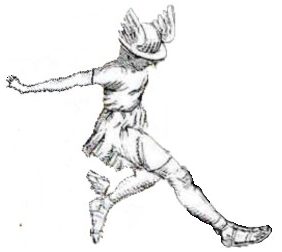
You must be logged in to post a comment.